A Brief History of the Texas Rangers
by Mike Cox
with updates by the Texas Ranger Hall of Fame and Museum Staff
* This brief history was formatted for a widescreen monitor. Please click here to view a PDF if experiencing issues. *
"They were men who could not be stampeded."
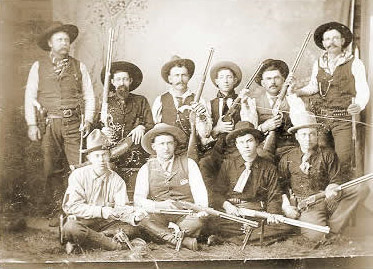
Frontier Battalion Co. "B" about 1880, ©2009, TRHFM
That's the way the late Col. Homer Garrison, Jr., long-time director of the Texas Department of Public Safety, once described the men who have worn the silver or gold star of the Texas Rangers, the oldest state law enforcement agency in North America. The Rangers have a heritage that began with the earliest settlements in Texas. They have been compared to other world-famous law enforcement agencies such as the FBI, Scotland Yard, and the Royal Canadian Mounted Police.
Scores of books, from well-researched works of nonfiction to Wild West pulp fiction novels have been written about the Rangers. And numerous movies, radio shows and television shows have been inspired by the Rangers over the years.
The Rangers are part of the history and mythology of the Old West. Over the years, a distinct Ranger tradition has evolved. As former Ranger Capt. Bob Crowder once put it, "A Ranger is an officer who is able to handle any given situation without definite instructions from his commanding officer, or higher authority. This ability must be proven before a man becomes a Ranger."
For The Common Defense


Stephen F. Austin assumed his late father's contract as empresario, or developer of settlements in the Mexican province of Tejas. He was authorized to recruit settlers from the U.S. and Europe who would be given land if, among other conditions, they agreed to become Mexican citizens, adopt the Catholic religion and learn to speak Spanish. Austin was to be rewarded for his services with land, titles and military powers over the colony. His colony, and those proposed by other empresarios, would serve to reinforce Mexico's claim to Texas and act as a buffer between the hostile Comanche Indians and Hispanic settlements at San Antonio de Bexar and Laredo.
By 1823, the settlements suffered frequent raids by the Comanche, Tonkawa and Karankawa Indians. Under Mexican law, Austin was authorized to form a militia to ward off Indian raids, capture criminals and patrol against intruders. In May, while Austin was in Mexico City, his lieutenant, Moses Morrison, used this authority to assemble a company of men to protect the Texas coast from the Tonkawa and Karankawa Indians.
After returning to Texas in August of 1823, Austin asked for an additional ten men to supplement Morrison's company. He called for "ten men...to act as rangers for the common defense...The wages I will give said ten men is fifteen dollars a month payable in property." These men are regarded as the first ancestors of the modern Texas Rangers.
During Austin's day, companies of men volunteered and disbanded as needed. Some served for days and others for many months. The official records show that these companies were called by many names: ranging companies, mounted gunmen, mounted volunteers, minutemen, spies, scouts and mounted rifle companies. By whatever name they were known, these units performed the same ranging duties.
These early Texas Ranger had multicultural roots. Company rolls show that Anglos, Hispanics and American Indians served in all ranks from private to captain. While most had been born in the American South, many also hailed from Ireland, Germany, Scotland and England. Early Rangers shot Spanish pistols, Tennessee and Kentucky rifles, carried Bowie knifes made in Sheffield England and rode swift Mexican ponies. Their tools and tactics were suited to the rugged frontier, and they provided their own horses and equipment. One writer said that a Texas Ranger could "ride like a Mexican, trail like an Indian, shoot like a Tennessean, and fight like the devil."
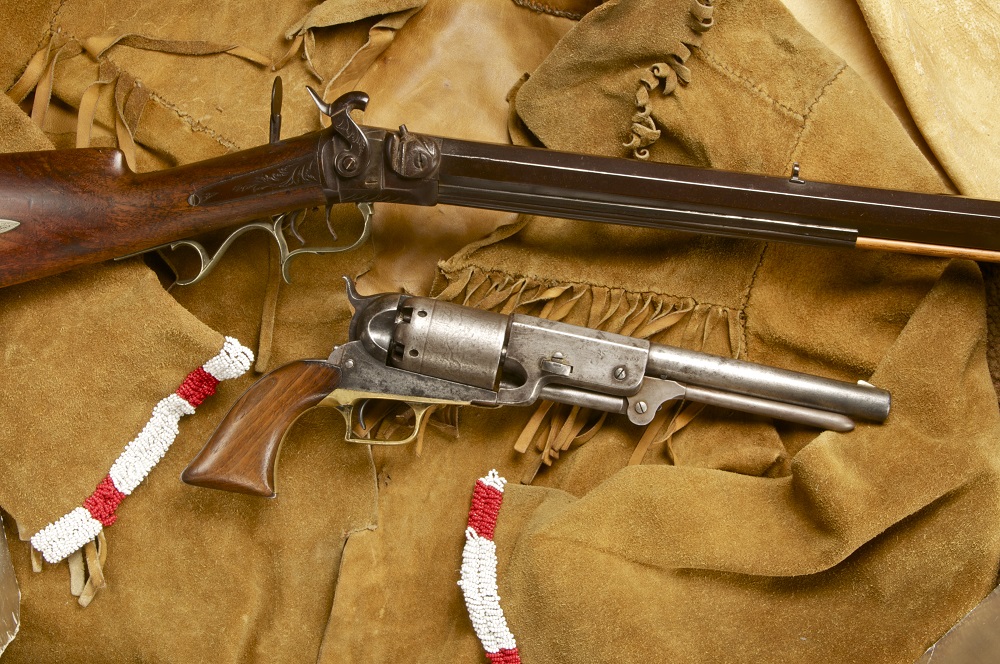
Texas Rangers often served as volunteers since government offers of payment rarely materialized. In 1835, as the movement for Texas independence was about to boil over, a council of Texas representatives created a "Corps of Rangers" to protect the frontier from hostile Indians. For the first time, their pay was officially set at $1.25 a day and they were to elect their own officers. They were required to furnish their own arms, mounts, and equipment.
Settlers rebelled against the Mexican government in 1836 over increasing dissatisfaction with the Mexican government and the suspension of immigration from the U.S. The Texas Rangers played an important but little known role in this conflict. They covered the retreat of civilians from the Mexican army in the famous "Runaway Scrape," harassed columns of Mexican troops and provided valuable intelligence to the Texas Army. The only men to ride in response to Col. William B. Travis' last minute plea to defend the Alamo were Rangers who fought, and died, in the cause of Texas independence.
Early Texas Rangers
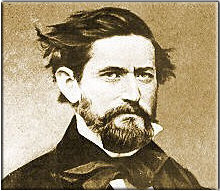
Certainly one of the most famous of the early Texas Rangers was John Coffee "Jack" Hays. He came to San Antonio in 1837 and within three years held the rank of Ranger Captain. Hays built a reputation fighting raiding Indians and Mexican bandits. An Indian who rode with Hays and his men called the young Ranger Captain "brave too much". Hays' bravado was too much for many a hostile Indian or outlaw. In dealing with persons deemed a threat to Texas, Hays helped establish another Ranger tradition--rugged toughness mixed with a reliance on the latest technology.
The Colt Revolver
The Republic of Texas was one of the earliest customers of a New England gun maker, Samuel Colt. Colt had invented a fragile .36 caliber five-shot revolver, a weapon Hays and his men used with deadly effect in defense of the Texas frontier. No longer would his men have to pause in battle to reload single-shot pistols and rifles while the Indians continued firing arrows. Colt built his reputation on the use of his weapons by the Texas Rangers. One of Hays' men, Samuel H. Walker, made some suggestions for improving the pistol which Colt adopted during the Mexican War. Produced in 1847, the new six-shot revolver weighed nearly five pounds and was called the Walker Colt.
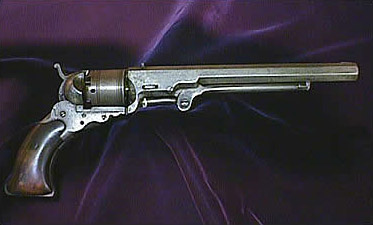
War with Mexico

In 1846, within a year of Texas' admission as the 28th state of the Union, the United States and Mexico were at war. Walker joined one of several Ranger companies that were mustered into federal service to function as scouts. The Rangers fought with such ferocity in the war they came to be called "Los diablos Tejanos" -- the Texas Devils. The luck Walker had after Mier did not hold. He was killed in the fighting. For the next decade after the Mexican War, the Rangers existed primarily as volunteer companies, raised when the need arose and disbanded when their work was done.
The Civil War
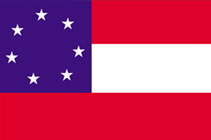
During the Civil War, with thousands of Texans off fighting with the Confederate Army, frontier protection was afforded by a "Regiment of Rangers." Even it eventually became part of the Confederate Army. The backbone of home front security was still the volunteer "ranging" company, whose members operated on the "legal authority" of the pistols they carried on their hips or the rifles swinging in their saddle holsters.
After the war, the Legislature passed a bill creating three companies of Texas Rangers but a bill to provide funding failed. Financial support for state law enforcement in the early 1870's was sporadic. For all practical purposes, there were no Texas Rangers for nearly a decade after the war. During this time, law enforcement was handled by a highly political and roundly hated organization known as the State Police. Texas, like other Southern states, was in the throes of reconstruction and any authority, civil or military, was distrusted. The force eventually was disbanded.
The Frontier Battalion

Following the upheaval of the Civil War and Reconstruction, The Frontier Battalion was organized in 1874 to create a permanent military force to protect the Texas frontier. Led by Major John B. Jones with six companies of 75 men each, the Rangers were tasked with defending the frontier from Indian raids. But by the end of the 1870s, as tribes were forced out of Texas, the Indian threat had largely disappeared and the frontier seemed secure.
The Rangers turned their attention from Indians to crime fighting in an increasingly lawless state. They stopped feuds, tracked cattle rustlers, and apprehended outlaws throughout Texas. This period saw Rangers apprehend some of the worst of the Old West outlaws, including John Wesley Hardin and Sam Bass. In 1900, a court ruling determined that only commissioned Rangers had full police powers, including the authority to make arrests. As a result, the force was abolished and reorganized in 1901.
Preserving Law and Order
In the 1890's, Rangers preserved law and order in Big Bend mining towns, tracked down train robbers and even were called on to prevent an illegal prize fight from taking place on Texas soil. The promoters of the storied Fitzsimmons-Maher bout finally had to settle for staging the boxing match on an island in the Rio Grande.
In 1894-95, the Rangers scouted 173,381 miles; made 676 arrests; returned 2,856 head of stolen livestock to the owners, assisted civil authorities 162 times and guarded jails on 13 occasions.

In 1900, the Frontier Battalion faded along with the frontier; but by July of 1901, the Legislature passed a new law concerning the Ranger service. The force, to be organized by the governor, was created "for the purpose of protecting the frontier against marauding or thieving parties, and for the suppression of lawlessness and crime throughout the state." Ranger captains picked their own men, who had to furnish their own horses and could dress as they choose. They did not even have a standard badge.
One Riot, One Ranger
The law authorized for Ranger companies of a maximum of 20 men each. The career of Company B. Capt. W. J. McDonald, and a book written about him, added much to the Ranger legend, including two of its most famous sayings.
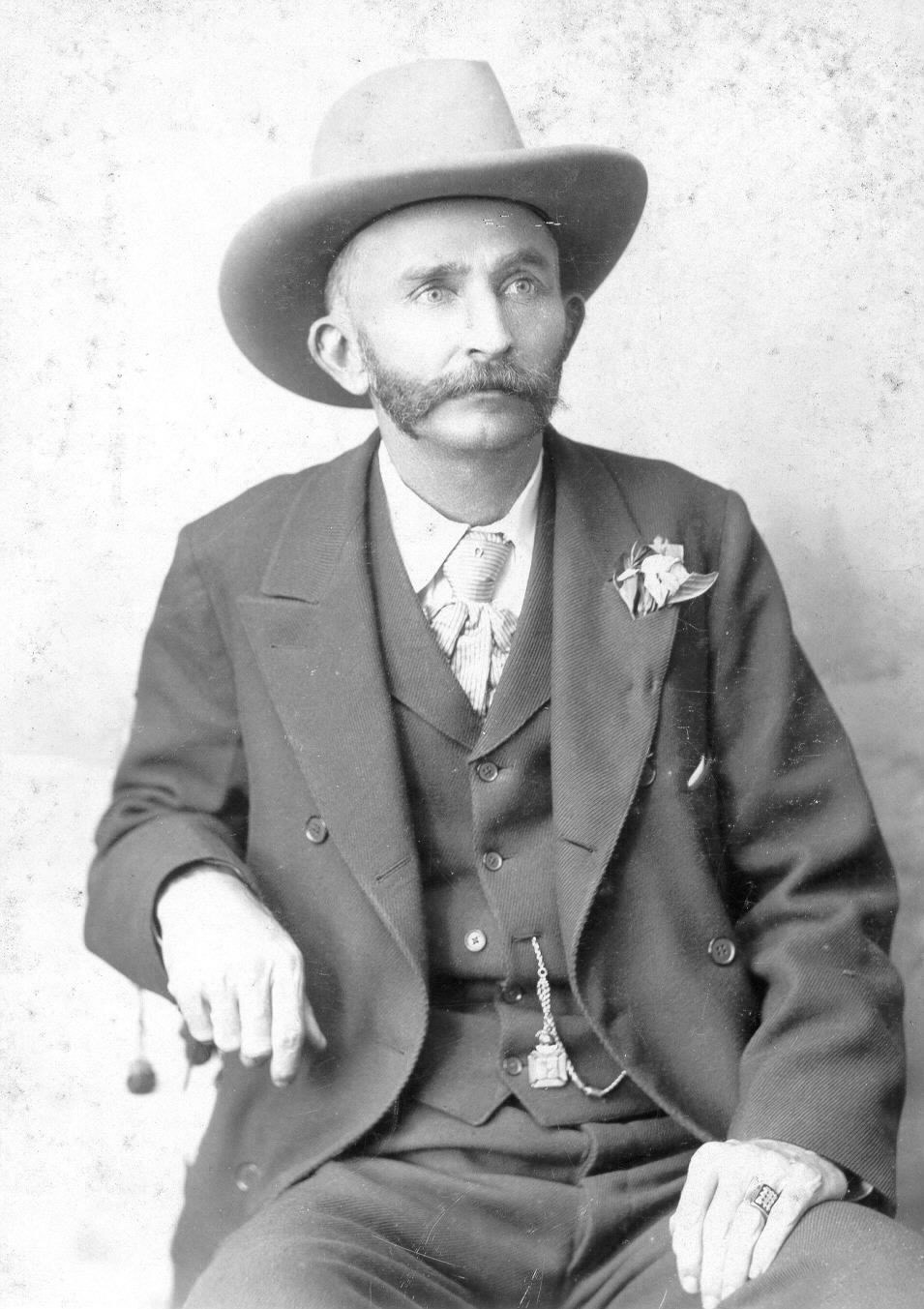
The often cited "One Riot, One Ranger" appears to be based on several statements attributed to Capt. McDonald by Albert Bigelow Paine in his book, Captain Bill McDonald: Texas Ranger. When sent to Dallas to prevent a scheduled prizefight, McDonald was greeted at the train station by the city's anxious mayor, who asked: "Where are the others?" To which McDonald supposedly replied, "Hell! ain't I enough? There's only one prize-fight!"
Since the days of the Mexican War, Rangers had had occasional work to do along the long, meandering Rio Grande, but the emphasis on the river increased in 1910 with the outbreak of revolution in Mexico. Generally easy to ford, the Rio Grande had never been much more than a symbolic boundary. Some of the violence associated with the political upheaval in Mexico crossed the river into Texas.
And on the title page of Paine's 1909 book on McDonald are 19 words labeled as Capt. McDonald's creed: "No man in the wrong can stand up against a fellow that's in the right and keeps on a-comin'." Those words have evolved into the Ranger creed.
Bandit Raids
Panic spread in 1915 when authorities in McAllen, Texas, arrest Basilio Ramos, Jr. Ramos was carrying a copy of the Plan of San Diego, a revolutionary manifesto supposedly written and signed at the South Texas town of San Diego. It called for the formation of a "Liberating Army of Races and Peoples," of Mexican Americans, African Americans, and Japanese, to "free" the states of Texas, New Mexico, Arizona, California, and Colorado from United States. Versions of the plan call for the murder of all white citizens over 16 years of age. The goal was an independent republic, which might later seek annexation to Mexico.
Raids from both side the the border quickly escalated into guerilla warfare. Francisco (Pancho) Villa's raid on Columbus, New Mexico, in March 1916, causes more panic and the United States responds by sending a large military force under Gen. John J. Pershing in pursuit of Villa.
Texas responded, as it had so many times in its history, by raising Ranger companies. At the time the Texas Ranger Force was very small, and incapable of maintaining law and order along the border. The Texas Legislature by authorizing mass inductions and the "overnight" creation of new Ranger companies.
Hispanic, as well as Anglo, Texans served in these units. The Ranger force grew to its largest level, but the lack of training and controls were evident. Some of the new companies upheld the law while others functioned as vigilante groups incensed by raids from Mexico.
These Rangers were were given orders and wide powers to keep the hostilities in Mexico from washing across the river into Texas. Gov. O.B. Colquitt wrote Ranger Capt. John R. Hughes: " I instruct you and your men to keep them (Mexican raiders) off of Texas territory if possible, and if they invade the State let them understand they do so at the risk of their lives."
The vigilante nature, and poor command structure on the new Ranger units led to incidents unacceptable to "regular" Rangers. Serious crimes were committed that led to the 1919 Canales Investigation. After one retaliatory Ranger raid into Mexico, an entire company was dismissed. In one battle in 1917, as many as 20 Mexicans may have been killed by Rangers who crossed into Mexico.
The 35th legislature also created a "Loyalty Ranger Force" under the "Hobby Loyalty Act" to serve as a secret service for the State. Loyalty Rangers were to brief the Adjutant General on Mexican revolutionary activities outside of San Antonio and in the border counties in Mexico and Texas.
In response to Pershing's US troops on Mexican soil, President Carranza demanded the withdrawal of US forces, which was summarily rejected. As a result, Mexican raiding intensified and an attack against Laredo was considered with a combined force of "San Diego raiders" and regular Mexican Army soldiers. A state of war was narrowly averted when US and Mexican officials agreed to a peaceful settlement.
The fragile peace was threatened again in 1917 when a World War I telegram sent to Mexico by the German Secretary of State Zimmerman became public ". . . we propose an alliance on the following basis with Mexico: That we shall make war together and together make peace. We shall give general financial support, and it is understood that Mexico is to reconquer the lost territory in New Mexico, Texas, and Arizona. The details are left to you for settlement...." Nothing materialized, but it served to further alarm the public.
Mexican raids into Texas in 1915-16 caused an estimated 21 American deaths; an estimated 300 Mexicans or Tejanos may have been killed in South Texas by the actions of Rangers, vigilantes and citizens. Some sources place the death toll as high as 300 and 3,000.
In January of 1919 Representative José T. Canales of Brownsville demanded a legislative investigation of the conduct of the various Ranger forces during the period 1915-1917 and the reorganization of the force. The Texas Legislature investigated nineteen charges made against the Texas Ranger forces in the aftermath of the Plan of San Diego and the War.
The investigation resulted in the reduction of the Ranger force to four companies of 17 men each. A tightening of qualifications for the Texas Ranger service led to its initial professionalization.
Bootleggers and Spies
In 1918, the national prohibition law was passed. It gave the Rangers, along with federal officers, another problem to cope with on the border. Many a burro train of bootleg liquor from Mexico was intercepted, and shoot-outs between Rangers and smugglers were not infrequent.
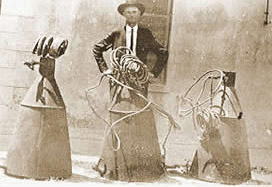
During the first World War, the already large regular Ranger force was supplemented with another 400 Special Rangers appointed by the governor. After the war, on the heels of a Legislative inquiry into the Rangers' operation on the border, the Legislature in 1919 reduced the size of the force to four companies of 15 men, a sergeant and a captain. Additionally, the lawmakers authorized a headquarters company of six men in Austin under a senior Ranger captain.
Texas was in a state of transition, and so were the Rangers. Rangers still rode the river on horseback, but they also used cars. The automobile was taking over as the principal mode of transportation in Texas and the rest of the country. And horseless carriages needed oil, not oats. The increased national demand for petroleum fueled a new law enforcement problem for the Rangers.
In addition to their traditional duties, along with assisting in tick eradication efforts, handling labor difficulties and the enforcement of prohibition, the Rangers had to deal with lawlessness that came with the oil boom in Texas. One of the first places that happened was in a community that years before had been named in their honor.
The Oil Boom in Texas
The small Eastland County town of Ranger, so named because it had been settled near the site of an old frontier Ranger camp, boomed with the discovery of oil in the area. By 1920, Ranger had a population 16,000, and a substantial number of those residents were not particularly interested in abiding by the law. Texas Rangers who were sent to Ranger, Texas raided gaming halls, smashed drinking establishments, and corralled a wide assortment of miscreants and felons. When Rangers filled the jails, prisoners sometimes had to be handcuffed to telephone poles.
The same story would be repeated throughout the '20s and '30s. Only the names of the towns changed. From Borger to Mexia, Rangers preserved what peace and dignity they could in the wild oil field boomtowns.
With the advent of the automobile the Rangers had greater mobility, but so did the outlaws. Robbers could hit a small town bank and quickly make their getaway. Rangers were given railroad passes, but had to provide their own cars.

Frank Hamer

Texas Ranger Hall of Fame and Museum
One of the best known Rangers who made the transition from horse to car was Frank H. Hamer. He first joined the Rangers in 1906. Hamer left the force occasionally to take other law enforcement jobs, but by 1921, he was captain of Ranger Co. C, stationed in Del Rio. At the beginning of 1922, he was transferred to Austin, where he would spend the next decade as a Ranger captain.
One of the major problems facing the Rangers during Hamer's tenure as Senior Ranger Captain was bank robbery. The situation got so bad, the Texas Bankers Association offered a standing $5,000 reward for bank robbers. There was one catch--the money would be paid for dead robbers only.
As the Depression took hold in Texas, unscrupulous types began setting up phony holdups, hiring men to rob a bank and then killing them in the act so the reward money could be collected. This was a situation the Rangers could not solve with force. Instead, Hamer went to the press, exposing what was happening. Hamer's move paid off--the banking association's reward policy was changed.
As Senior Ranger Captain, Hamer reported to the state's adjutant general, a man appointed by the governor. A governor also could appoint Rangers, or influence a selection. As governors changed, Ranger leadership usually changed. Though history shows many good men wore the Ranger badge in the 1920s and 1930s, the system was rife with politics and ripe for abuse.
When Gov. Miriam "Ma" Ferguson took office in 1933, Adjutant General W.W. Sterling resigned his office. Forty Rangers, including Capt. Hamer, left with him.
Trailing Bonnie and Clyde
But Hamer was not away from law enforcement for long. In February 1934, Lee Simmons, superintendent of the Texas prison system, asked Hamer if he would track down the notorious criminal couple Clyde Barrow and Bonnie Parker. Hamer agreed and was given a commission as a Texas highway patrolman.
Since 1927, when a force had been created to patrol the expanding Texas roadways, the state in effect had two police agencies. The young Highway Patrol operated as part of the Highway Department.
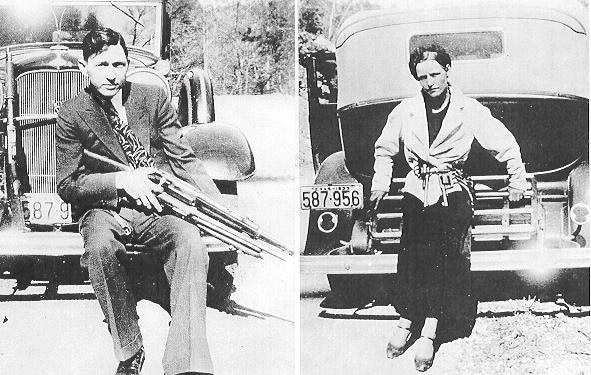
Hamer trailed Bonnie and Clyde for 102 days. Finally, Hamer and other officers, including former Ranger Manny Gault, caught up with the dangerous duo in Bienville Parish, Louisiana. The officers had hoped to take the outlaws alive, but when the pair reached for their weapons, Hamer and the others opened fire. The career of Bonnie and Clyde was over.
For a time, it looked like the Texas Rangers were not going to last much longer than Bonnie and Clyde. Under Gov. Ferguson, Ranger commissions were easy to come by, and not all those handed a silver star were men whose character was worthy of the honor. Additionally, Ferguson appointed some 2,300 Special Rangers. A few of those were even ex-convicts.
The Texas Department of Public Safety
The problem did not go unrecognized. The Texas Senate, on Sept. 25, 1934, formed a committee to investigate crime and law enforcement in the state. The committee produced a report in early 1935 that was singularly critical of Texas law enforcement. However, the document also proposed a solution: the creation of a state law enforcement agency to be known as the Department of Public Safety.
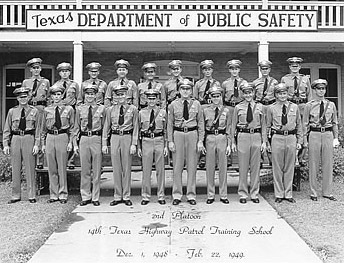
A bill was introduced that would create such an agency, which would operate under a three-member Public Safety Commission. The Texas Rangers would be transferred from the Adjutant General's Department and Highway Patrol would be moved from the Highway Department to form a single state police force. Some modifications in the law were made by a joint House-Senate conference committee, but on Aug. 10, 1935, it became effective.
Under the new DPS, the Ranger force would consist of 36 men. Though smaller than it had been in years, the Texas Rangers would finally have the benefits of a state-of-the-art crime laboratory, improved communications, and, most importantly, political stability. With the creation of the DPS, the Rangers would have professionalism to match their tradition.
Tom Hickman, a veteran Ranger, was named senior captain of the Rangers. The force was organized into five companies, each headed by a captain.
Within a year of their incorporation into the DPS, the Texas Rangers got national publicity with the opening of the Texas Centennial Exposition in 1936 at the State Fairgrounds in Dallas. The headquarters for Co. B was set up in a specially-built log building on the fairgrounds. Texas Rangers were seen in news reel footage in movie houses around the nation.
Modernization
Depression-era DPS appropriations were lean, but as the decade of the 1930s ended, the Texas Rangers were on their way toward modernization. Fingerprint and modus operandi files were available for Ranger use at the Department's Camp Mabry headquarters in Austin, and Ranger vehicles were equipped with police radio receivers, though two-way radio would not be available to Rangers until the 1940s. Former Ranger Manuel T. (Lone Wolf) Gonzaullas headed the Department's Bureau of Intelligence, which gave Rangers the benefit of chemical, ballistic and microscopic testing in their criminal investigations. In their early years as part of the DPS, Rangers were paid automobile mileage and furnished a Colt .45 and a lever-action Winchester .30 caliber rifle by the state. Rangers still had to provide their own car, horse, and saddle, though the DPS issued horse trailers.


For the first time, Rangers had the benefits of in-service training. They also had to write weekly activity reports. The Texas Rangers were part of another agency but their duties essentially were the same as they had been for years. Rangers were called upon to enforce the state's laws, with particular emphasis on felony crimes, gambling and narcotics. Rangers also were used in riot suppression and in locating fugitives.
World War II
During World War II, Rangers provided vigilant internal security in Texas. Ranger duties varied from showing air raid warning training films to tracking down escaped German POWs later in the war. When U.S. Army Rangers landed in France, the German press thought those commandos were Texas Rangers. This apparently caused considerable anxiety among the German people. The Reich's minister of propaganda eventually had to clarify matters.
By 1945, the authorized strength of the Texas Rangers had been increased to 45 men. Two years later, the force was increased again, to 51 men. Texas was growing in the post-war economy and so was the parent agency of the Rangers. In 1949, the Legislature authorized construction of a new headquarters building in North Austin. The same year, the DPS bought its first airplane. A Ranger became the Department's first pilot-investigator.
In their first year under the DPS, the Rangers took part in an estimated 255 cases; two decades later, in 1955, the Rangers were involved in 16,701 cases.
Keeping the Peace
The 1950s through the '70s were a turbulent time involving prison riots, Civil Rights and labor movements and desegregation.
After questionable use of Texas Rangers in some incidents, changes were made further defining their mission and restricting State and local authorities from using the Texas Rangers to aid or resist political agendas.
In 1955, inmates in the Rusk State Hospital for the Criminally Insane rioted and took hostages. The National Guard was brought in and Ranger Capt. R. A. "Bob" Crowder, to prevent violence, and the leader of the mob negotiated and the inmates surrendered.

In 1956 Governor Governor Allan Shivers, chose to passively resist federal desegregation of two schools in Texas following a district court order to implement the Supreme Court decision Brown v. Board of Education. He dispatched a Texas Ranger to Mansfield and two to Texarkana with instructions to keep the peace, but not assist African American students in registering for school. The federal government chose not to intervene and registration was unsuccessful.
In 1957 Texas Rangers and Troopers were sent to intervene in a violent steel mill strike in East Texas. Assaults, ambushes, murder, exchanges of gunfire, and a bombing were common between union and non-union elements.
In 1966 the Texas Rangers were sent to Starr County in South Texas. Texas farmers and ranchers, the local Sheriff and Justice of the Peace called for their assistance to interfere with a United Farm Worker organizing attempt and strikes. Intimidation and illegal incarceration was common. Court actions found violations of civil rights and appeals went to the Supreme Court.
In 1974 the Texas Rangers and FBI were sent to intervene in an eleven day prison riot in Huntsville. Hostages were taken, two were killed, but the rest were saved.
Following these events, State and local governments were restricted from requesting or using Texas Rangers as strikebreakers, in civil protests or demonstrations and in prison riots. Their mission has increasingly investigative, special response aand oversight, Border security, and crisis response.
Today's Rangers
Decades later, the Texas Rangers are still investigating cattle thefts and major felony crimes. However, early Texas Rangers could not imagine the level of technical expertise and advanced training by today's rangers.
The Ranger force is comprised of approximately 170 commissioned Rangers distributed in seven companies ("A" through "F" and a headquarters detachment in Austin). "Field Rangers" are supervised by a Chief, Assistant Chief, company majors and lieutenants.
Special functions are now carried out by highly trained Rangers and Texas DPS personnel and include:
Special Weapons and Tactics (SWAT),a highly trained team headquartered in Austin, whose primary mission is responding statewide to critical incidents of a high risk nature; such as hostage situations, barricaded subjects, active shooter incidents and high risk warrant service.
The Explosive Ordnance Disposal Unit (EOD) i embedded with the SWAT team. This unit will provide a primary response to crisis situations involving explosive devices, improvised explosive devices, vehicle-borne improvised explosive devices, as well as communicated threats involving explosive devices.
The Ranger Reconnaissance Team, a highly trained tactical team whose primary responsibility is to carry out specific missions, usually along the Texas-Mexico border region or wherever needed. The team is designed to conduct both overt and extended covert operations in remote areas where conventional law enforcement cannot operate. The teams focus is to gather intelligence, conduct interdiction, and disruption of criminal activity usually associated with drug cartels.
Special Response Teams (SRT), specialized teams which operate on an “as needed” basis and are located within each of the DPS Regions. SRT is comprised of a cross section of officers from Texas Highway Patrol, Criminal Investigations Division and the Texas Rangers. SRT members are trained to conduct high risk warrant service and provide initial response to critical incidents involving barricaded subjects, hostage situations, and active shooter incidents within their respective DPS regions.
Crisis Negotiation Teams (CNT) are specialized teams who are trained to facilitate the professional resolution of critical incidents involving emotionally disturbed individuals, hostage situations, and/or barricaded subjects. CNT members are comprised of a cross section of officers from Texas Highway Patrol, Criminal Investigations Division and the Texas Rangers, who respond to incidents within their respective regions. CNT members deploy as a team and are tasked with the evaluation and resolution of the critical incident, collection of necessary intelligence, and relaying incident information to the Special Operations Commander.
Border Security Operations Center (BSOC) - Joint Operations and Intelligence Centers (JOIC). The Border Security Operations Center (BSOC) is headquartered in Austin and serves as the focal point for the six Joint Operations and Intelligence Centers (JOICs) located along the Texas/Mexico border. Responsibilities include analyzing intelligence and collecting border security information, while collaborating with state, local, and federal law enforcement partners to conduct intelligence-directed border enforcement operations and ensure information exchange between agencies. BSOC is tasked with the timely dissemination of intelligence through a variety of mediums to law enforcement and governmental partners, including the in-depth weekly Border Operations Sector Assessment of the Texas/Mexico border. BSOC operates the State of Texas’ technology initiatives to combat criminal and border exploitation while supporting tactical initiatives, such as the Special Operations Group.
Public Integrity Unit Public Corruption is high on the department’s list of investigative priorities, as the breach of trust undermines the confidence in public officials. The Rangers were selected to ensure unbiased and non-political in its application,.
Interdiction for the Protection of Children Program is a nationally recognized program trains troopers and other law enforcement officers how to recognize suspicious behavior in children and adults leading to the identification and recovery of abducted and missing children.
Becoming a Ranger
Texas Rangers are selected from the ranks of the Department of Public Safety. No recruiting has ever been necessary. It is not unusual for more than 100 officers to apply for only a single opening. To become a Ranger, a DPS officer must have at least eight years of commissioned law enforcement experience (including two years with the DPS) and must have at least 60 hours of college or equivalencies, Ranger appointments are made up on the basis of a competitive examination and oral interviews. Rangers are required to attend at least 40 hours of in-service training every two years, but for most Rangers, the training far exceeds that. Some Rangers receive additional training in areas such as forensic hypnosis, which has played an important role in numerous criminal cases.
Standard Equipment
In addition to their extensive training and experience, modern Rangers have the benefit of state-of-the-art weaponry and other equipment. Each Ranger is equipped with a variety of firearms, protective gear, and tools and equipment for gathering evidence at a crime scene. High-powered sniper rifles, night vision scopes, tear gas guns and gas masks are available for each Ranger company. Other specialized equipment like black lights and electronic surveillance equipment are at the disposal of the Rangers as well.
Today's Rangers travel by car, airplane or helicopter and occasionally by horse. Rangers do not have uniforms but dress as they need to. A Ranger in Dallas might wear a suit and tie while a Ranger assigned to a rural area would likely choose Western wear. During normal everyday activity, Rangers wear western boots and have their badges pinned to their shirts.
As Walter Prescott Webb wrote in his 1935 history of the Texas Rangers,
"The Rangers had to be superior to survive. Their enemies were pretty good...(the Rangers) had to be better..."
© 2018 Texas Ranger Hall of Fame and Museum, a division of the City of Waco.
